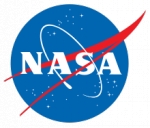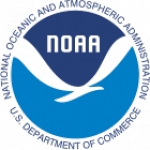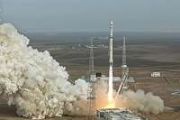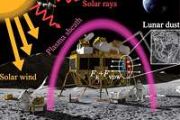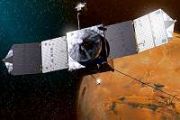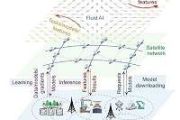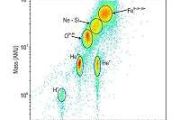Displaying items by tag: NOAA
NASA - Goddard Space Flight Center (GSFC)
The Goddard Space Flight Center (GSFC) is a major NASA space research laboratory established on May 1, 1959 as NASA's first space flight center. GSFC employs approximately 10,000 civil servants and contractors, and is located approximately 6.5 miles (10.5 km) northeast of Washington, D.C. in Greenbelt, Maryland, USA. GSFC, one of ten major NASA field centers, is named in recognition of Dr. Robert H. Goddard (1882–1945), the pioneer of modern rocket propulsion in the United States.
GSFC is the largest combined organization of scientists and engineers in the United States dedicated to increasing knowledge of the Earth, the Solar System, and the Universe via observations from space. GSFC is a major U.S. laboratory for developing and operating unmanned scientific spacecraft. GSFC conducts scientific investigation, development and operation of space systems, and development of related technologies. Goddard scientists can develop and support a mission, and Goddard engineers and technicians can design and build the spacecraft for that mission. Goddard scientist John C. Mather shared the 2006 Nobel Prize in Physics for his work on COBE.
GSFC also operates two spaceflight tracking and data acquisition networks (the Space Network and the Near Earth Network), develops and maintains advanced space and Earth science data information systems, and develops satellite systems for the National Oceanic and Atmospheric Administration (NOAA).
GSFC manages operations for many NASA and international missions including the Hubble Space Telescope (HST), the Explorer program, the Discovery Program, the Earth Observing System (EOS), INTEGRAL, the Solar and Heliospheric Observatory (SOHO), the Rossi X-ray Timing Explorer (RXTE) and Swift. Past missions managed by GSFC include the Compton Gamma Ray Observatory, SMM, COBE, IUE, and ROSAT. Typically, unmanned earth observation missions and observatories in Earth orbit are managed by GSFC, while unmanned planetary missions are managed by the Jet Propulsion Laboratory (JPL) in Pasadena, California.
EUMETSAT
The European Organisation for the Exploitation of Meteorological Satellites (EUMETSAT) is an intergovernmental organisation created through an international convention agreed by a current total of 30 European Member States.
EUMETSAT's primary objective is to establish, maintain and exploit European systems of operational meteorological satellites. EUMETSAT is responsible for the launch and operation of the satellites and for delivering satellite data to end-users as well as contributing to the operational monitoring of climate and the detection of global climate changes.
The activities of EUMETSAT contribute to a global meteorological satellite observing system coordinated with other space-faring nations.
Satellite observations are an essential input to numerical weather prediction systems and also assist the human forecaster in the diagnosis of potentially hazardous weather developments. Of growing importance is the capacity of weather satellites to gather long-term measurements from space in support of climate change studies.
EUMETSAT is not part of the European Union, but became a signatory to the International Charter on Space and Major Disasters in 2012, thus providing for the global charitable use of its space assets.[1]
- public organisation
- Europe
- mission operations
- satellite operator
- meteorology
- Copernicus (EO program)
- Meteosat Third Generation
- Meteosat
- Meteosat Second Generation
- MTG
- MSG
- MTP
- Meteosat Transition Phase
- METOP
- METOP SG
- Sentinel 1
- Sentinel 2 satellite
- Sentinel 2
- Sentinel 3
- Sentinel 4
- sentinel 5P
- sentinel 5
- Sentinel 6
- JasonCS
- Jason 2
- Jason 3
- EPS
- EPS_SG
- NOAA

